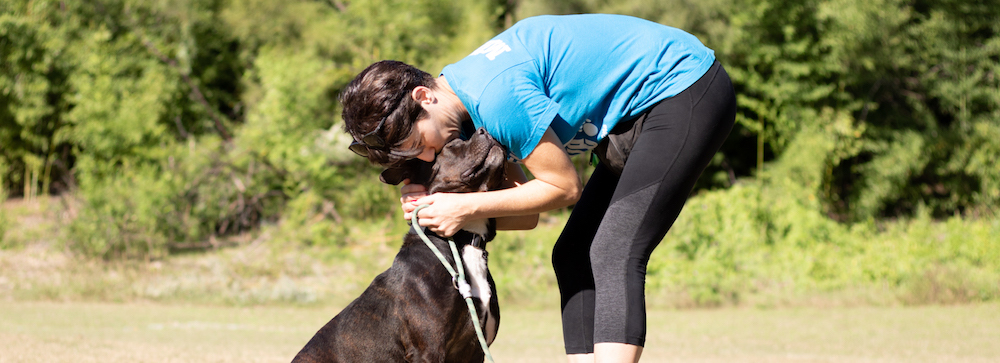At Pima Animal Care Center, the average length of stay in the shelter for a dog is about 12 days. However, some of our big dogs could wait for several months before being adopted – so we’ve tailored our shelter program to keep the 350 to 450 dogs housed on any given day at PACC happy and healthy until they go to foster or adoptive homes.

1. We play group dogs. We run playgroups for our dogs seven days a week and most new dogs are evaluated in play groups. Longer stay dogs get to play often if they like other dogs. Our goal is that every dog go to playgroup every day.
2. We let dogs choose their roommates in playgroup. Co-housing dogs is great for mental health. We co-house whenever we can because it speeds up adoptions (people know those dogs may like another dog) and makes the dogs much calmer and relaxed.
3. Volunteers walk every dog, every day: Our incredible volunteer team makes sure every dog gets a walk and a potty break at least once a day.
4. Everyone gets a Nylabone: The very basics of kennel enrichment: every non-co-housed dog gets a Nylabone or its yummier version, the Benebone. Longer stay dogs get stuffed Kongs, treats, and pretty much any delicious, fun item a volunteer or staff member can think of. We don’t put very many limits on what dogs can have in the shelter. A lot of our pups sleep with a stuffed animal or other soft toys.
5. Longer stay dogs have appropriate walking equipment. Sometimes, we’ll leave harnesses on the dogs in their kennels because they don’t mind them. This can also reduce stress on the dog and handler when the dog is being leashed up for a walk.
6. Older dogs get cushy beds or blankets to alleviate soreness.
7. We have a system for handling different dogs, so more challenging dogs are walked by more experienced, confident handlers while new volunteers or those who aren’t as confident can walk the easier pooches who don’t pull on their leash or bark at other dogs.
8. They get groomed: Volunteers groom as many dogs as they can get to which makes for adorable post-bath content!. For some of the dogs, it’s the first time they’ve ever been pampered!
9. We play music and talk radio.
10. Staff are encouraged to stop and give affection to dogs as they go about their daily duties.
11. We keep treats everywhere and encourage people to give treats to non-co-housed dogs.
12. Little dogs live in groups: This makes them feel so much safer (and warmer!).
13. We provide access to daylight and fresh air: All dogs can see day and night cycles and about half of our dogs are in indoor/outdoor kennels.
14. No dogs are sprayed or shoved during kennel cleaning: We use treats and coaxing to get dogs to move from one side to another.
15. Kennels are spot cleaned regularly so dogs don’t have to lay in their own waste.
Do you use any other enrichment methods for the dogs in your shelter? If so, share them with us at [email protected]!